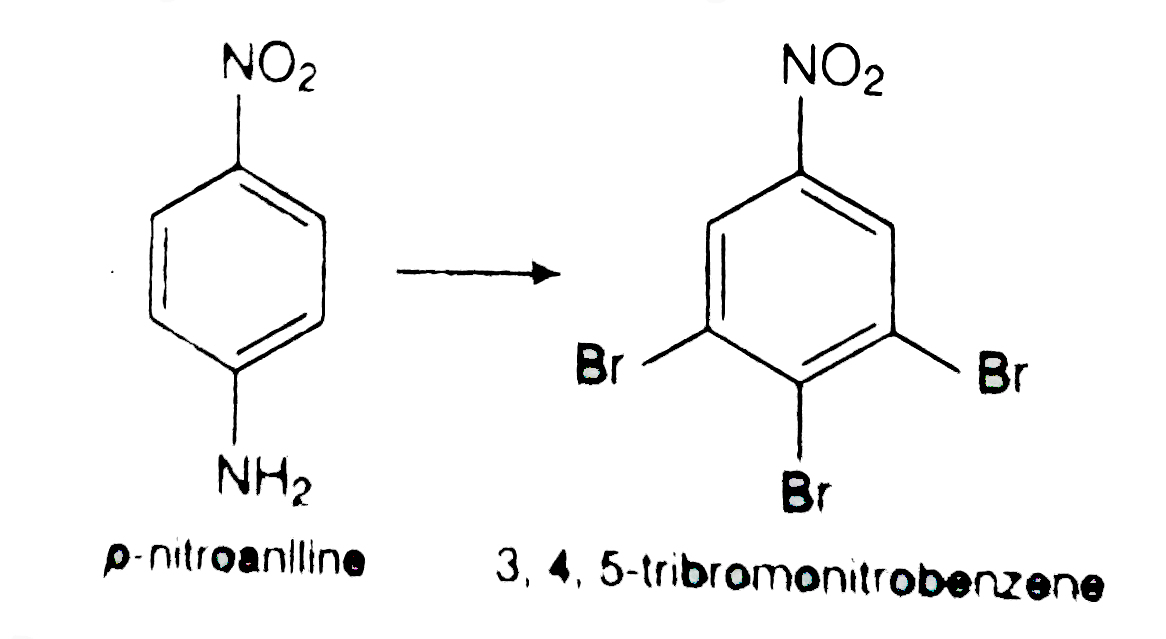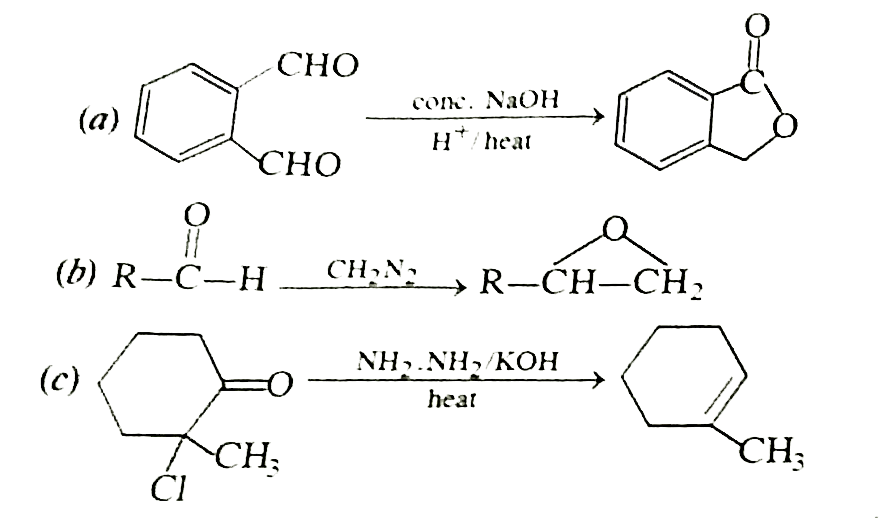How will you bring about the following conversions?
Benzotrichloride to benzoic acid.
To convert benzotrichloride (C6H5CCl3) to benzoic acid (C6H5COOH), we can follow these steps:
1. Identify the Reactants and Products:
- Reactant: Benzotrichloride (C6H5CCl3)
- Product: Benzoic acid (C6H5COOH)
2. Reaction with Aqueous KOH:
- Benzotrichloride will undergo nucleophilic substitution reaction with aqueous KOH. Since benzotrichloride has three chlorine atoms, we will need three moles of KOH to replace each chlorine atom with a hydroxyl group (OH).
3. First Step of Nucleophilic Substitution:
- The hydroxide ion (OH-) from KOH attacks the carbon atom bonded to the first chlorine atom. This results in the replacement of one Cl with an OH group, forming C6H5CCl2(OH) and releasing KCl.
4. Second Step of Nucleophilic Substitution:
- The second hydroxide ion (OH-) attacks the carbon bonded to the second chlorine atom. This leads to the replacement of the second Cl with another OH group, forming C6H5CCl(OH)2 and releasing another KCl.
5. Third Step of Nucleophilic Substitution:
- The third hydroxide ion (OH-) attacks the carbon bonded to the last chlorine atom. This results in the complete substitution of all three chlorines with hydroxyl groups, forming C6H5C(OH)3 and releasing KCl.
6. Dehydration to Form Benzoic Acid:
- The compound C6H5C(OH)3 is not stable, as it has three hydroxyl groups on one carbon. Upon heating, one molecule of water (H2O) is eliminated from this compound, leading to the formation of benzoic acid (C6H5COOH).
Final Reaction Summary:
The overall reaction can be summarized as:
C6H5CCl3+3KOH→C6H5COOH+3KCl+2H2O
- Reactant: Benzotrichloride (C6H5CCl3)
- Product: Benzoic acid (C6H5COOH)
- Benzotrichloride will undergo nucleophilic substitution reaction with aqueous KOH. Since benzotrichloride has three chlorine atoms, we will need three moles of KOH to replace each chlorine atom with a hydroxyl group (OH).
- The hydroxide ion (OH-) from KOH attacks the carbon atom bonded to the first chlorine atom. This results in the replacement of one Cl with an OH group, forming C6H5CCl2(OH) and releasing KCl.
- The second hydroxide ion (OH-) attacks the carbon bonded to the second chlorine atom. This leads to the replacement of the second Cl with another OH group, forming C6H5CCl(OH)2 and releasing another KCl.
- The third hydroxide ion (OH-) attacks the carbon bonded to the last chlorine atom. This results in the complete substitution of all three chlorines with hydroxyl groups, forming C6H5C(OH)3 and releasing KCl.
- The compound C6H5C(OH)3 is not stable, as it has three hydroxyl groups on one carbon. Upon heating, one molecule of water (H2O) is eliminated from this compound, leading to the formation of benzoic acid (C6H5COOH).
The overall reaction can be summarized as:
C6H5CCl3+3KOH→C6H5COOH+3KCl+2H2O
Topper's Solved these Questions
- ALDEHYDES, KETONES AND CARBOXYLIC ACIDSBOOK - ICSECHAPTER - ALDEHYDES, KETONES AND CARBOXYLIC ACIDSEXERCISE - ISC EXAMINATION QUESTIONS (PART-II DESCRIPTIVE QUESTIONS) (CARBOXYLIC ACIDS)
99 Videos
- ALCOHOLS, PHENOLS AND ETHERS BOOK - ICSECHAPTER - ALCOHOLS, PHENOLS AND ETHERS EXERCISE - ISC EXAMINATION QUESTIONS
25 Videos
- APPENDIX II ( TYPICAL CONVERSIONS)BOOK - ICSECHAPTER - APPENDIX II ( TYPICAL CONVERSIONS)EXERCISE - AROMATIC CONVERSIONS
98 Videos
Similar Questions
How will you bring out the following conversion?

View SolutionHow will you bring about the following conversions?
Benzonitrile to benzoic acid
View SolutionHow will you bring about the following changes :

View SolutionHow will you bring about the following conversions?
Acetic acid to ethane
View SolutionHow will you bring about the following conversions :
Acetic acid to glycine
View SolutionHow will you bring about the following conversions ?
Aniline to bromobenzene
View SolutionHow will you bring about the following conversions :
Benzaldehyde to benzophenone?
View SolutionHow will you bring about the following conversion? Phenol to benzoic acid.
View SolutionHow will you bring about the following conversions :
Ethanoic acid to propanoic acid
View SolutionHow will you bring about the following conversions ?
(i) Benzoic acid to Benzaldehyde
(ii) Benzene to m-Nitroacetophenone
(iii) Ethanol to 3-Hydroxybutanal.
View Solution
